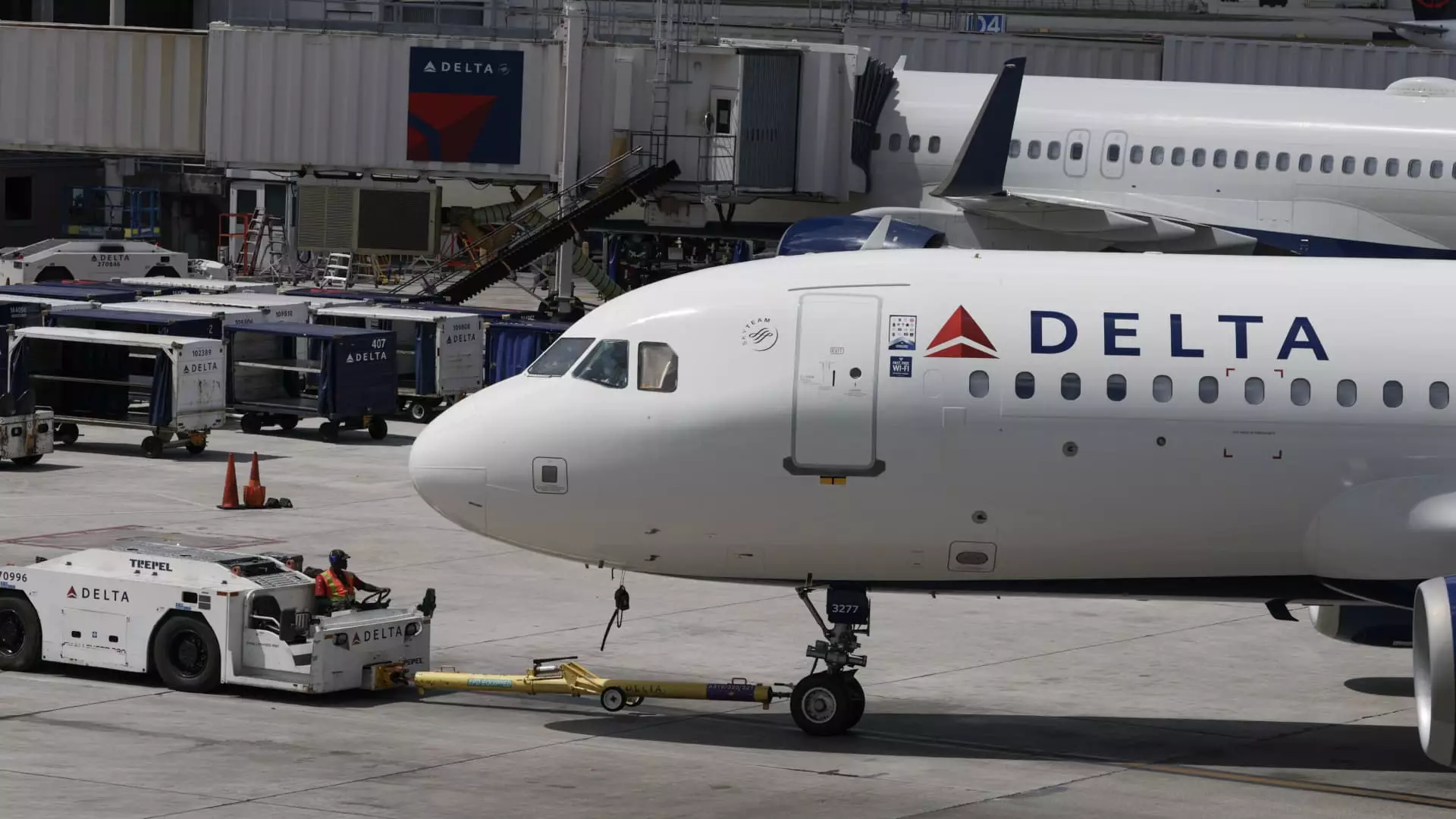In recent weeks, the stock market has defied gravity, soaring back to record highs with a vigor that seems almost relentless. The S&P 500, a bellwether of American economic sentiment, has climbed over 25% from its April lows—an extraordinary rebound that invites both awe and skepticism. Yet, beneath this impressive surface lies a troubling inconsistency: not all sectors or individual companies share in this bullish enthusiasm. The market’s apparent strength is, in many respects, an illusion that conceals deep-seated vulnerabilities, particularly among specific industries like airlines, which serve as a microcosm of broader economic fragility.
What makes this rally precarious is the undeniable divergence between the broad index and certain lagging constituents. For instance, Delta Air Lines remains more than 25% off its pre-February peaks despite the overall market’s climb. This disconnect signals that the impressive gains mask underlying structural challenges within specific sectors that’re unlikely to be resolved solely through bullish sentiments. If the market’s euphoria is based on a narrative of economic normalization, it overlooks fundamental issues—such as overcapacity, rising costs, and fluctuating demand—that threaten the sustainability of what appears to be a recovery.
Airlines: The Bullish Illusion in the Face of Reality
Airlines serve as a stark illustration of the disparity between market perception and economic reality. On the surface, falling fuel prices and an accommodative Fed environment might seem bullish. Fuel costs have recently declined to around $2.30 per gallon, promising increased margins and a shot in the arm for airline profitability. However, this potential boost is overshadowed by escalating labor expenses, which are projected to rise by roughly 7% annually. These wage increases threaten to erode any gains made by cheaper fuel, painting a more complex financial picture.
Furthermore, capacity expansion—most notably driven by the major U.S. carriers like United, Delta, and American—is growing at a pace exceeding GDP growth. This overinvestment risks flooding the market with seats, lowering fares, and squeezing profit margins. The aggressive domestic capacity expansion, especially in the crowded and lucrative U.S. market, resembles a race to the bottom rather than a sign of healthy, sustainable growth. This surplus capacity, paired with wage inflation and uncertain demand elasticity, suggests that the current rebound may be more fragile than it appears.
While the options market is pricing in heightened volatility—anticipating a 7% earnings move next week and a 12% swing over subsequent weeks—such projections often reflect trader anxiety rather than firm fundamentals. The rising premiums that accompany these options indicate a market on edge, wary of a potential correction yet still caught in the euphoria of the recent rally.
Questionable Hype and the Risks of Overconfidence
The broader market’s turnaround is propelled more by narrative than by real economic strength. Investors seem content to chase old highs, blind to the warning signs lurking beneath the surface. The tendency to view the rally as a vote of confidence in the economy’s trajectory neglects critical indicators—such as the stagnant or underperforming sectors, the overleveraged corporate balance sheets, and the mounting costs that can swiftly erase recent gains.
This complacency is dangerous; markets are inherently cyclical and susceptible to corrections when expectations confront reality. The current optimism, while seemingly justified by recent data, risks turning into a bubble fueled by excessive liquidity and speculative behavior. The airline sector exemplifies this: while a favorable environment for fuel and some demand recovery exists, structural flaws like capacity overshoot and rising costs threaten to undo the illusion of resilience.
The temptation for investors is to capitalize on this perceived undervaluation through strategic options trades, such as calendar spreads, aiming to profit from expected volatility. Nonetheless, these instruments are a double-edged sword. Misjudging market sentiment or macroeconomic shocks could accelerate losses, especially in a climate where fundamentals are often secondary to narrative-driven optimism.
This market cycle underscores a vital lesson: superficial strength can deceive even the most seasoned investors. Overextension, combined with complacency and unchallenged optimism, breeds systemic risks. As the rally continues, a sharp reminder is needed that not every percentage point increase reflects genuine economic progress. Sometimes, the most optimistic markets are the most fragile—and the hardest to sustain.


Leave a Reply